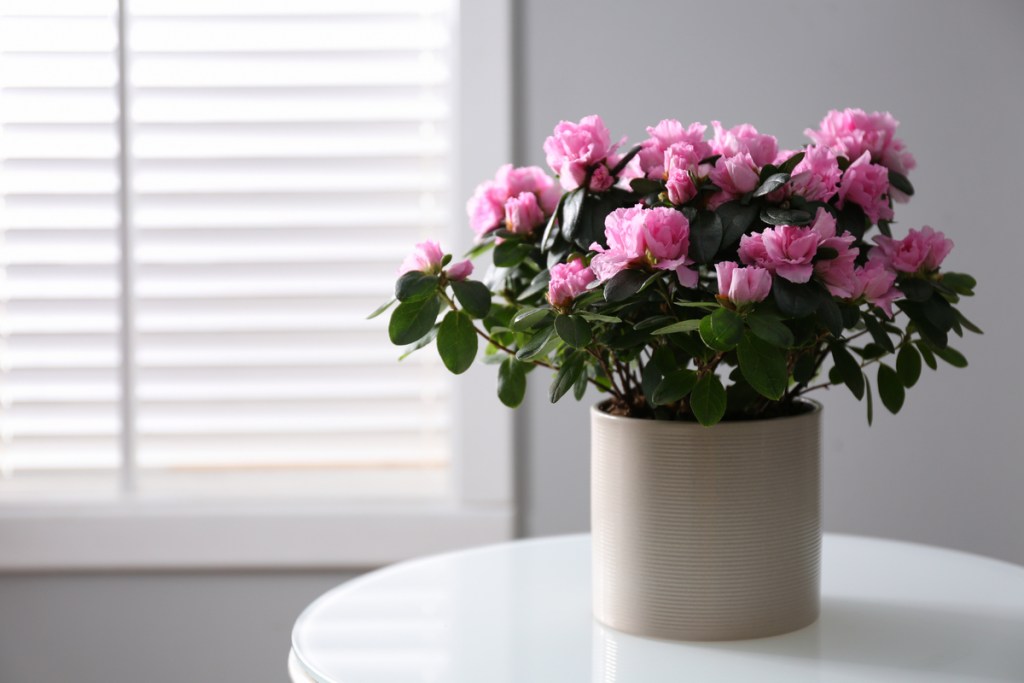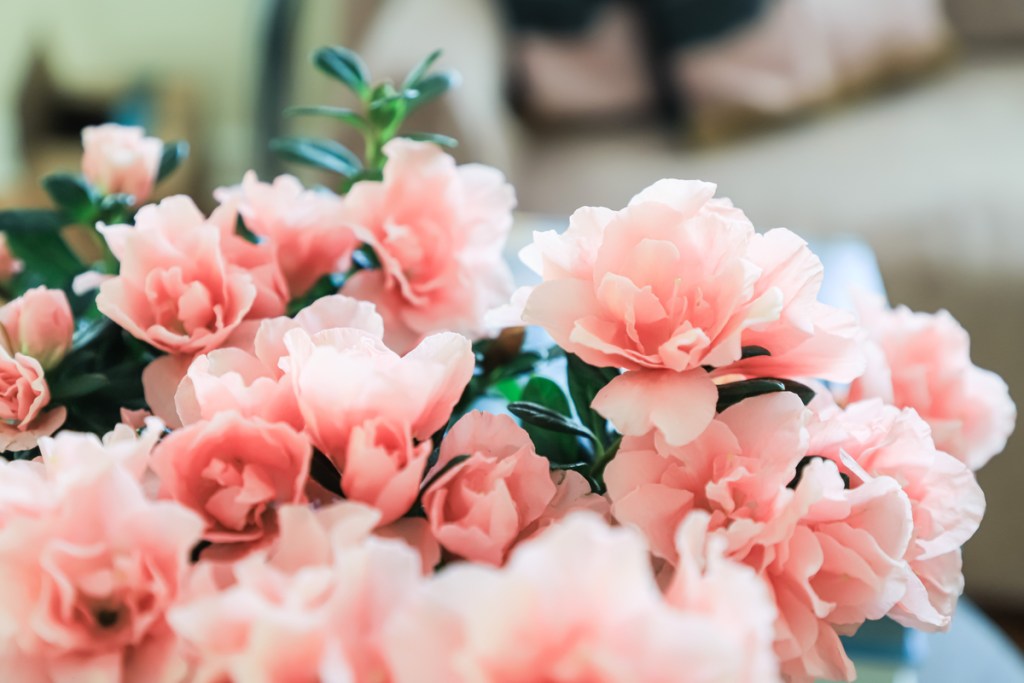Azaleas are beautiful flowering plants that are most often grown by outdoor gardeners. Many of the varieties are shrubs, lending themselves to garden borders or centerpieces, depending on how much space you have. Because azaleas are sometimes referred to as rhododendrons, it can be a bit confusing to know which one you’re actually growing. Azaleas have evenly distributed blooms throughout the plant whereas rhododendron blooms often grow in clusters. Azalea leaves are also smaller and brighter, so it’s easy to tell the two kinds of plant apart if you know what you’re looking for.
These outdoor shrubs usually mark the beginning of the season — but have you ever considered growing azaleas indoors?

Why grow azaleas indoors?
Growing azaleas indoors is just another way for you to bring mother nature closer to you. Especially if you have minimal outdoor growing space (or none at all), an indoor azalea can let you enjoy similar perks that outdoor gardeners have when their shrubs bloom every season; however, you won’t be growing a shrub in your home.
Indoor azalea varieties are smaller, usually found inside greenhouses and nurseries. Their colors are just as gorgeous: whites, reds, pinks, and purples. You can choose a variety whose blooms you love the most and have a color best-suited to your indoor aesthetic (who doesn’t love a plant with options?).
Is it more difficult to grow azaleas indoors?
The task of growing azaleas indoors is no more difficult than growing them outdoors (except when it comes to flowering, but we’ll touch on that in a minute), but usually you’ll be using a different variety. The indoor azaleas varieties, often known as “greenhouse azaleas,” are only hardy in USDA hardiness zone 10 and are much better for indoor growing and smaller spaces than the shrub varieties.
Greenhouse azaleas may not be obviously marked, but you’ll usually find them inside a nursery or greenhouse–sometimes with decorative foil wrapped around their pots. Most of the azalea shrubs are known as “hardy azaleas” and grow best in an outdoor environment. Although it’s possible to bring one indoors, you’ll have better luck with a variety that will enjoy the indoor environment.
The best indoor azalea will be one with only a few buds that are showing color. The more blooms there are, the less time you’ll have to enjoy the flowering period in your home.

Caring for and growing azaleas indoors
In their native habitats, azaleas grow in the understory of tall trees, thriving off the filtered sunlight and cooler temperatures. If you’re growing one in your home, you’ll want to keep it in a space that stays somewhere between 60 and 65 degrees Fahrenheit. The cooler temperatures will increase the longevity of the bloom, too, so you’ll be able to enjoy them for longer inside than you would if they were grown outdoors!
The main thing you’ll need to keep an eye on is the level of moisture. Like most indoor plants, azaleas don’t like to have their roots sitting in soggy soil. Watering top-down is great for regular care, but you may want to consider occasionally dunking your plant in a larger container of water. If and when you do, you should submerge the entire pot, wait for the bubbles to stop, then pull the pot out and let the excess water drain.
Light needs: Like a decent amount of light indoors, but should be kept out of direct sunlight
Water needs: Regular watering; likes to be kept moist, but not soggy
Soil needs: Azalea-specific potting mix is best, as they prefer a higher acidity and won’t do well in neutral or alkaline soils
Things to know about azalea flower care
Most people, when growing azaleas indoors, won’t pay much attention to the blooms. When they die off, indoor azaleas are often discarded and treated as annual plants that won’t flower again next season. But with proper azalea flower care, you can get it to rebloom — though it isn’t an easy feat.
If you’re interested in getting an indoor azalea to rebloom, here are the steps you should follow:
- Once the flowers are spent, let the plant have a little more light. Fertilize it with a fertilizer suited for azaleas every couple weeks.
- When the weather warms up, keep the pot in a somewhat shaded area (either indoors or outdoors if you have a partially shaded outdoor space).
- Cut back any leggy or weakened growth in mid-summer, shaping the azalea and keeping it well-watered.
- From early November to early January, your indoor azaleas will need temperatures between 40 and 60 degrees Fahrenheit. This is where things can get tricky, especially if you don’t have a space that meets those needs. An enclosed, sunny porch or balcony is perfect as long as temperatures don’t drop below freezing. In an apartment, getting an azalea to rebloom may not be possible because the colder temperatures are what allow the blooms on the azalea to set.
- Continue giving your indoor azalea enough water so that it doesn’t wilt, but be mindful of the moisture level. You shouldn’t fertilize your plant during this time, as all the nutrients it needs have been stored in the leaves.
- After the beginning of January, you can bring the plant back into a space where nightly temperatures are around 60 degrees Fahrenheit. If done properly, you should have flowers in a couple weeks.
If the process doesn’t work the first time around, but your azalea is still thriving, there’s no reason you can’t try again! At the very least, growing azaleas indoors will still add a bit of greenery to your home and brighten up the space, even without the colorful blooms they’re known for.


